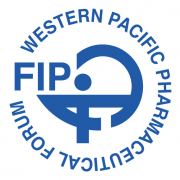[WHO]: News Update July
Reference: http://www.who.int/en/
http://www.who.int/mediacentre/news/en/
http://www.who.int/medicines/publications/newsletter/en/
http://www.who.int/medicines/publications/druginformation/en/index.html
—
XIX International AIDS Conference 2012 opens: from treatment to ending transmission of HIV
22 July 2012 — The XIX International AIDS Conference (AIDS 2012) opened on Sunday, 22 July in Washington, DC. During the conference, WHO is presenting a discussion paper on the strategic use of antiretroviral drugs (ARVs) and a report on HIV drug resistance. WHO has released new recommendations on the use of ARVs for pre-exposure prophylaxis (PrEP), guidance on HIV services for sex workers, and guidance on the prevention of HIV and hepatitis among people who inject drugs.
Read more about the AIDS Conference 2012
Reducing hepatitis infections in people who inject drugs
21 July 2012 — WHO has identified four key actions countries can take to prevent viral hepatitis B and C among people who inject drugs. Of the estimated 16 million people who inject drugs worldwide, it is estimated that 10 million are infected with hepatitis C. An additional 1.2 million are infected with hepatitis B. New guidelines issued by WHO provide the first step to comprehensive guidance on viral hepatitis surveillance, prevention and treatment.
Using HIV medications to protect people at high risk of infection
20 July 2012 — WHO issues its first guidance to countries that are considering offering antiretrovirals (ARVs), to protect people who do not have the virus but who are at high risk of HIV infection. Clinical trials have shown that a daily dose of oral antiretroviral medication, known as pre-exposure prophylaxis (PrEP), taken by HIV-negative people to reduce the risk of infection, is both safe for people to use and effective in preventing HIV.
- Antiretrovirals: read about prevention of HIV infection
- Oral pre-exposure prophylaxis (PrEP) guidance
Strategic use of HIV medicines could help end transmission of virus
18 July 2012 — More strategic use of antiretroviral HIV medications can significantly reduce the transmission of the virus according to WHO proposals that will be presented at the XIX International AIDS Conference in Washington, DC on Sunday. “We now have evidence that the same medicines we use to save lives and keep people healthy can also stop people from transmitting the virus and reduce the chance they will pass it to another person,” says Dr Margaret Chan, Director-General, WHO.
——————————————————————————-
News releases
- ‘Strategic use’ of HIV medicines could help end transmission of virus
18 July 2012 — More strategic use of antiretroviral HIV medications can significantly reduce the transmission of the virus according to WHO proposals that will be presented at the XIX International AIDS Conference in Washington, DC on Sunday. - UN food safety body sets limits on veterinary growth promoting drug
6 July 2012 — The UN food standards body has agreed on a set of residue limits for the veterinary drug ractopamine in animal tissues. The decision was made after a rigorous process of scientific assessment to ascertain that the proposed levels of residues of the growth promoting drug have no impact on human health.
Statements
- Polio eradication worker shot and killed in Karachi, Pakistan
21 July 2012 - Serious security incident in Karachi, Pakistan
17 July 2012
Notes for the media
- WHO: Four ways to reduce hepatitis infections in people who inject drugs
21 July 2012 - WHO issues first guidance on use of antiretrovirals by HIV-negative people at high risk to prevent infection
20 July 2012
———————————————————————————————————-
WHO Pharmaceuticals Newsletter
No. 3, 2012
Authors:
Quality Assurance and Safety
The WHO Pharmaceuticals Newsletter provides you with the latest information on the safety of medicines and legal actions taken by regulatory authorities across the world. It also provides signals from the Uppsala Monitoring Centre’s SIGNAL document.
The feature articles in this issue give you a brief summary of a course offered by the WHO Collaborating Centre for Drug Satistics Methodology; and a pilot project being launched by the Uganda National Drug Authority, to collect pharmacovigilance data in their HIV treatment programmes.
——————————————————————————————————————————
WHO Drug Information
Volume 26, N° 2, 2012
Authors:
QSM
The second issue for 2012 features an article on the WHO Prequalification of Medicines Programme which, since 2009, has been hosting and coordinating a novel quality risk assessment mechanism on behalf of the Global Fund to Fight AIDS, Tuberculosis and Malaria. The Expert Review Panel assesses quality risks of pharmaceutical products which do not yet meet stringent quality requirements. Based on standardized, transparent criteria, it gives advice on whether a product is acceptable for procurement for the next 12 months. The process has promoted progression of many medicines to prequalification: of 115 eligible products assessed by the ERP in 2009 and 2010, 44 went on to become prequalified or approved by a stringent regulatory authority. Agencies are using the mechanism jointly and this has resulted in harmonized quality assurance policies, unified quality standards and efficiency gains.
The section on Safety and Efficacy highlights information on signals and reports of adverse drug reactions, with other news from around the world, including labelling changes. This is complemented by the section on Regulatory Action and News which provides the most recent developments from regulatory authorities, and particularly those having an impact on decision-making and risk assessment.
The final and temporary lists of ATC/DDD Classifications adopted by the WHO International Working Group for Drug Statistics Methodology are also presented.
The final section, Recent Publications, Information and Events, provides brief summaries of several recently-published documents and online resources.
The journal concludes with the 107th Proposed List of International Nonproprietary Names (INN).


